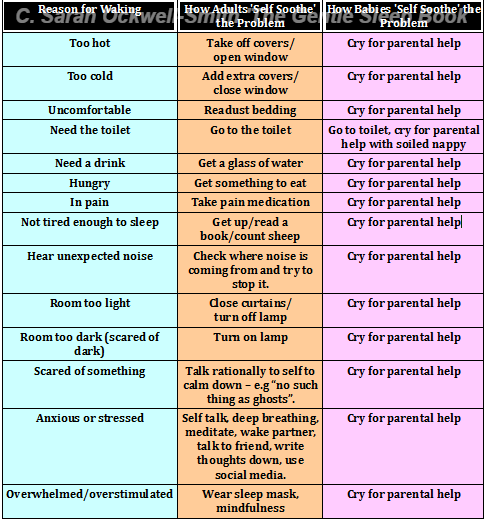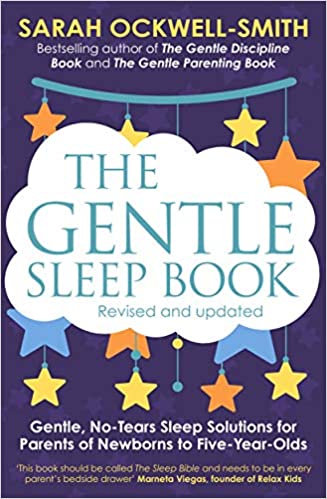Adults, children and babies all wake many times each night. ‘Sleeping through the night’ is a misnomer, it indicates something that is not biologically possible. We all sleep in cycles moving through light and deep sleep. At the end of each cycle a new cycle may immediately begin (giving the impression that the individual is ‘sleeping through’), or the individual may wake.
Babies move through many more sleep cycles than adults, in part because they sleep for longer at night and also because their sleep cycles are significantly shorter. While adults will experience around 5-6 sleep cycles per night, babies experience anything between 12 to 16 (depending on age and total length of sleep).
When it comes to transitioning between sleep cycles adults only have to link cycles five or six times. Babies however have to transition anything up to three times as many cycles. Each end and start of a sleep cycle is an opportunity for them to wake if something in their body or their environment is not right.
Conventional ‘sleep experts’ focus heavily on teaching babies to ‘self soothe’ or ‘self settle’. They believe that teaching this skill will help the baby to transition between cycles without parental input. This they believe is the key to getting babies to ‘sleep through the night’. This is often taught by a degree of parental abandonment where the child is left to ‘figure things out’ alone (which supposedly teache them to self soothe). Techniques vary from ‘Cry it Out’ (where the child is left to cry until they eventually fall asleep) to ‘controlled crying’ (a version of the above where the parent checks the child every few minutes and then leaves the room to allow the baby to cry more), to ‘disappearing chair’ or ‘gradual withdrawal’ (where the parent moves further and further away from the child and responds initially with sshing and patting the baby’s tummy or bottom, to ultimately only ssshing or talking to the child from the other side of the room or even outside of the door). The presumption with these techniques is always the same, to teach ‘Self soothing’ or ‘self settling’.
I feel it is vital however that parents understand exactly what the baby is capable of doing, from a brain and physical development point of view. When an adult ‘self soothes’ it looks very different to an infant ‘self soothing’. Some examples are shown in the table below.

The ability to ‘self soothe’ requires both sophisticated brain development and physical skills such as getting out of bed alone, walking and manipulating the environment. If the infant therefore ceases crying, does it mean that they are soothed? Or does it mean that they have been trained not to cry because they quickly learn that the parent does not meet their needs, ergo, there is no point in crying? The answer is blatantly obvious to me, is it to you?
Sarah
p.s: Come and chat with me on Facebook, Twitter and Instagram
Or watch my videos on YouTube
You can also sign up for my free parenting newsletter HERE.


You must be logged in to post a comment.